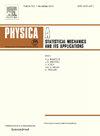A dynamic temporal and spatial speed control strategy for partially connected automated vehicles at a signalized arterial
Abstract
The connected and automated vehicle (CAV) is able to acquire the global intelligence in advance by communicating with other CAVs and roadside units (RSU), thus integrated speed control has the potential of easing the traffic wave, reducing the fuel consumption and emissions. In this paper, a dynamic temporal and spatial speed control framework is proposed to optimize the travel speed of CAVs along the signalized arterial under the mixed traffic flow including CAVs and human driven vehicles (HDVs). A speed control optimization method is proposed to minimize the number of stops of the ego CAV and its follower HDV with considering the signal status and queuing. A secondary speed control method based on the dynamic control areas is introduced in the mentioned framework to guide the CAV to the targeted positions. The corresponding dynamic variable parameter model is then designed to optimize the operational parameters of the corresponding control area to minimize the total fuel consumption of all vehicles under different market penetration rates. Finally, the simulation platform of Urban Mobility (SUMO) is used to test the proposed speed control strategy. The results indicate that the total stop delays are reduced by 60.9 % and saving 6.5 % total fuel consumption under the 30 % penetration rate.

 求助内容:
求助内容: 应助结果提醒方式:
应助结果提醒方式:


